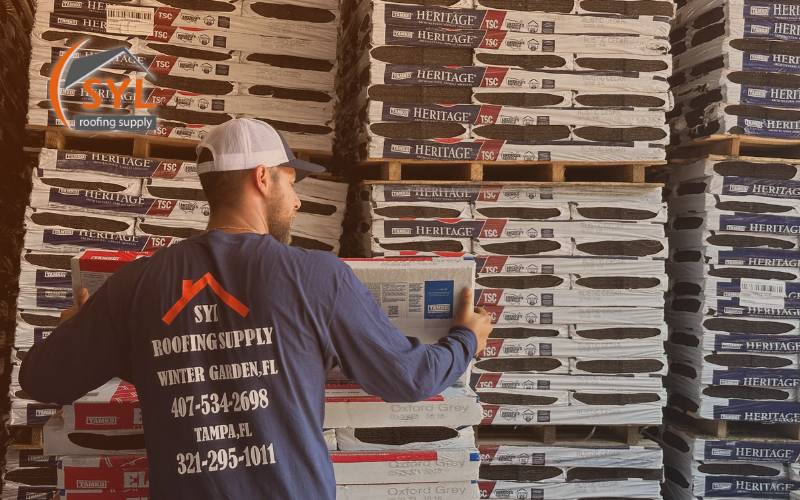Expert Advice on Installing Roofing Supplies for DIY Enthusiasts
If you’re a DIY enthusiast looking to take on a roofing project, we commend your enthusiasm! Installing roofing supplies can be a rewarding and cost-effective way to improve your home’s protection and curb appeal. However, before you climb up that ladder, there are some crucial tips and expert advice you should know to ensure a successful and safe roofing installation. Let’s dive into the key factors you need to consider and the best practices to follow for a successful DIY roofing project.
1. Safety First
Before you even start thinking about roofing supplies and materials, prioritize safety. Roofing work can be hazardous, so it’s essential to take all necessary precautions. Here’s what you need to do:
Invest in high-quality safety gear, including a well-fitting helmet, non-slip shoes, gloves, and a safety harness.
Never work on the roof during unfavorable weather conditions, such as rain or strong winds.
Use a stable and sturdy ladder that is appropriately secured before climbing up to the roof.
Ensure that someone else is aware of your roofing project and can assist you in case of an emergency.
2. Choose the Right Roofing Supplies
Selecting the appropriate roofing supplies is crucial for the success and longevity of your roof. Consider factors such as your local climate, budget, and the overall aesthetics of your home. Common roofing materials include:
Asphalt Shingles: Affordable, easy to install, and available in various styles and colors.
Metal Roofing: Durable, energy-efficient, and often made of recycled materials.
Wood Shingles or Shakes: Natural and rustic appearance, but require more maintenance.
Synthetic Roofing: Mimics the look of other materials but offers better durability and resistance to weather.
3. Prep the Roofing Surface
Before laying any roofing materials, ensure that the roof surface is clean, dry, and free of debris. Replace any damaged or rotten sheathing, and fix loose nails or screws. Applying an underlayment is also essential for an added layer of protection against moisture and leaks.
4. Follow Installation Guidelines
Each roofing material comes with specific installation guidelines provided by the manufacturer. Read and follow these instructions carefully to ensure that your roof is installed correctly. Pay attention to the recommended nail or screw placement, overlaps, and other essential details.
5. Consider Hiring a Roofing Professional
While DIY roofing can be a rewarding project, it’s not for everyone. If you feel uncertain about your skills or lack the necessary experience, consider hiring a professional roofing contractor. They have the expertise, tools, and knowledge to handle the job safely and efficiently. Moreover, professional roofers often offer warranties on their work, giving you added peace of mind.
Frequently Asked Questions (FAQs)
Q1: Can I install roofing supplies on top of my existing roof?
A1: While it’s possible to install new roofing supplies over an existing roof, it’s not always recommended. Layering new materials over an old roof can add weight and may not provide adequate ventilation. Additionally, it may void the warranty of the new roofing materials. It’s best to consult a roofing professional to determine if a roof tear-off is necessary before installing new supplies.
Q2: How long can I expect my new roof to last?
A2: The lifespan of a new roof depends on the type of roofing supplies you choose and the local climate. Asphalt shingles typically last between 15 to 30 years, while metal roofing can last 50 years or more. Proper installation, regular maintenance, and choosing high-quality materials can help extend the life of your roof.
Q3: Can I install a new roof myself without any prior experience?
A3: While some experienced DIY enthusiasts may successfully install a new roof, it’s a complex and potentially dangerous task. Roofing requires specialized skills, and mistakes can lead to costly repairs or even injuries. If you’re a beginner, it’s best to consult a professional or consider a smaller DIY project until you gain more experience.
Q4: Are there any eco-friendly roofing options available?
A4: Yes, there are several eco-friendly roofing options available. Some examples include metal roofing made from recycled materials, cool roofing materials that reflect sunlight and reduce energy consumption, and wood shingles harvested from sustainable sources. Consult with roofing suppliers to explore eco-friendly choices suitable for your home.
Q5: How do I find reliable roofing supplies near me?
A5: Finding reliable roofing supplies near you is as easy as conducting an online search. Use search engines and online directories to find local suppliers. Additionally, consider asking for recommendations from friends, family, or local contractors who have had positive experiences with roofing suppliers in your area.
In conclusion, installing roofing supplies for your DIY project can be a rewarding endeavor if you prioritize safety, choose the right materials, and follow expert advice. However, if you feel unsure or overwhelmed, don’t hesitate to seek help from a professional roofing contractor. With the right approach, you can achieve a durable and aesthetically pleasing roof that adds value to your home. Happy roofing!

